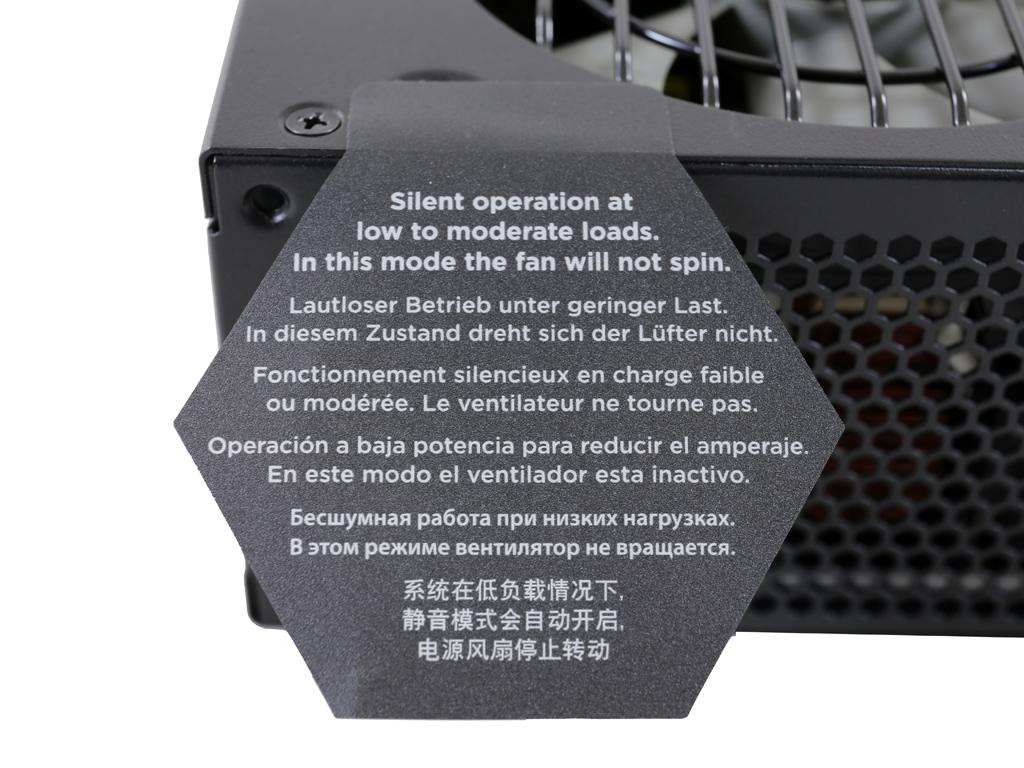Corsair SF450 PSU Review
Corsair enters the SFX PSU market with its new SF series consisting of two models at 450W and 600W capacities. Both power supplies are fully modular, promise high performance and come with 92mm fans to minimize noise output.
Why you can trust Tom's Hardware
Packaging, Contents, Exterior And Cabling
Packaging
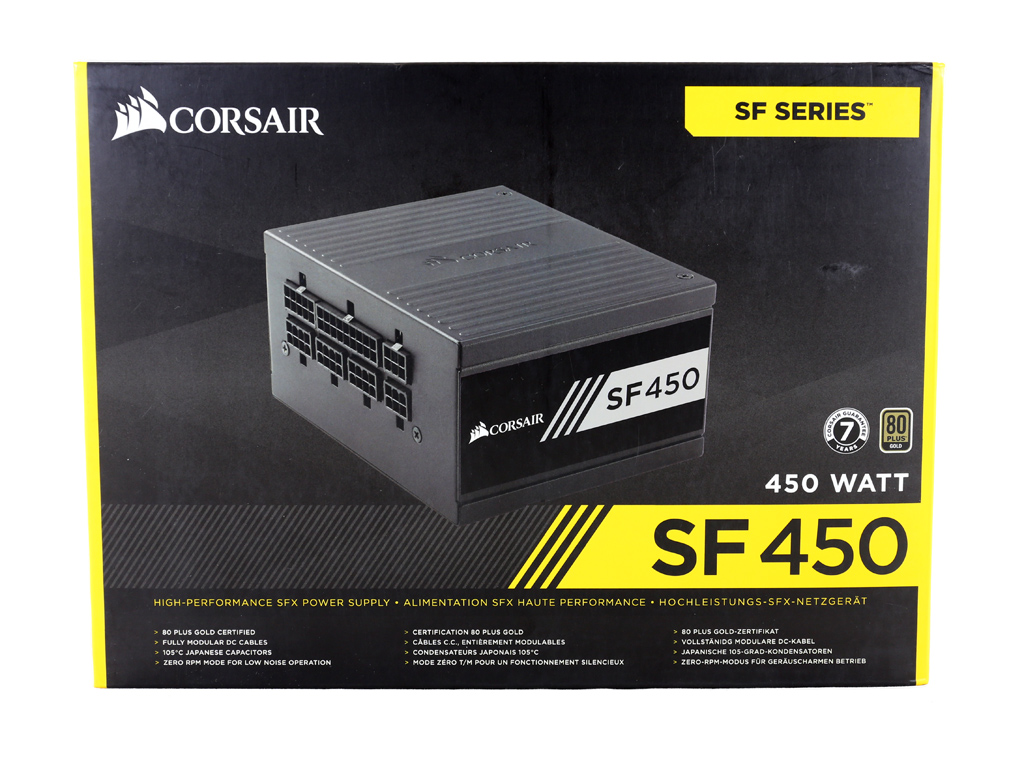
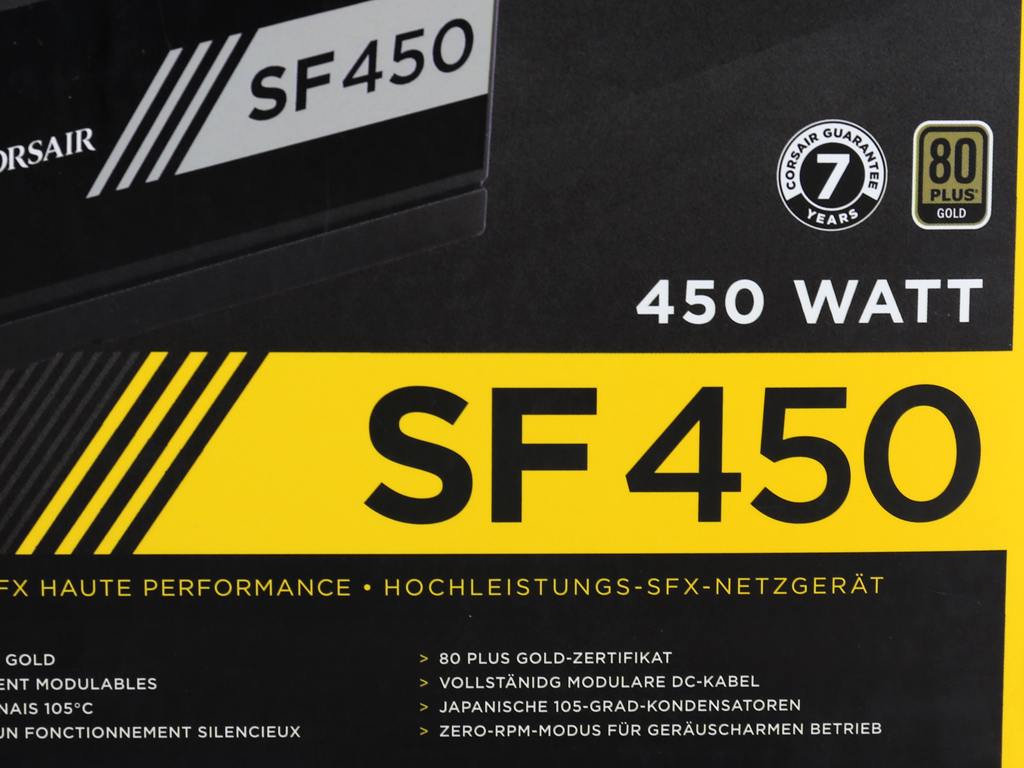
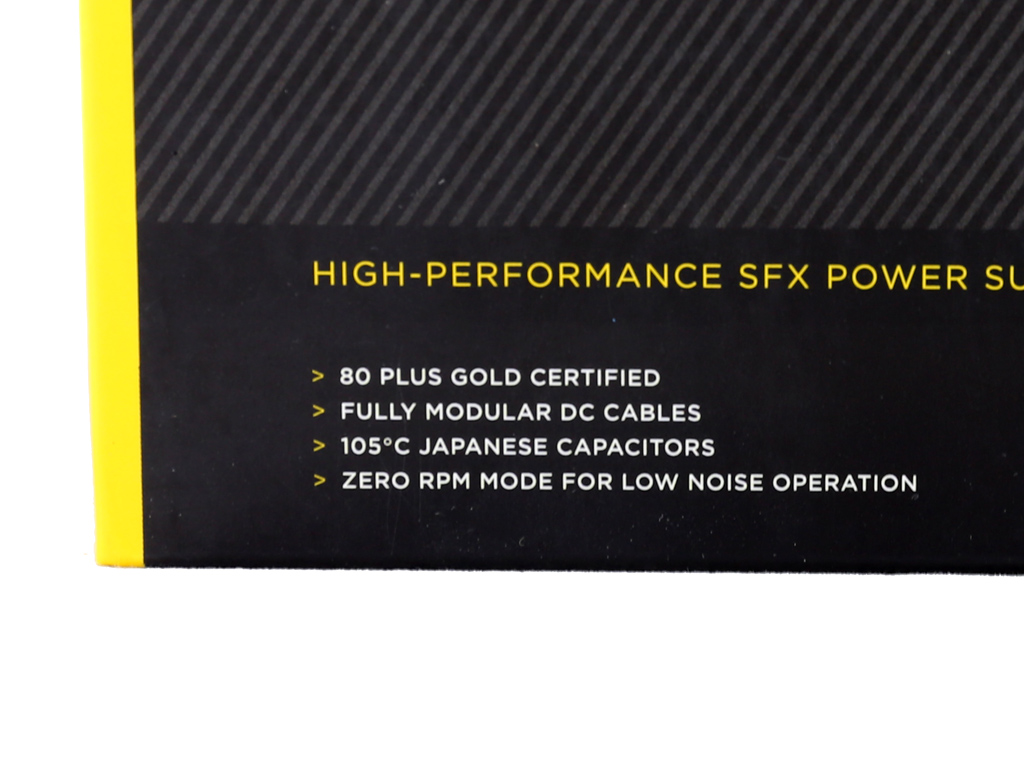
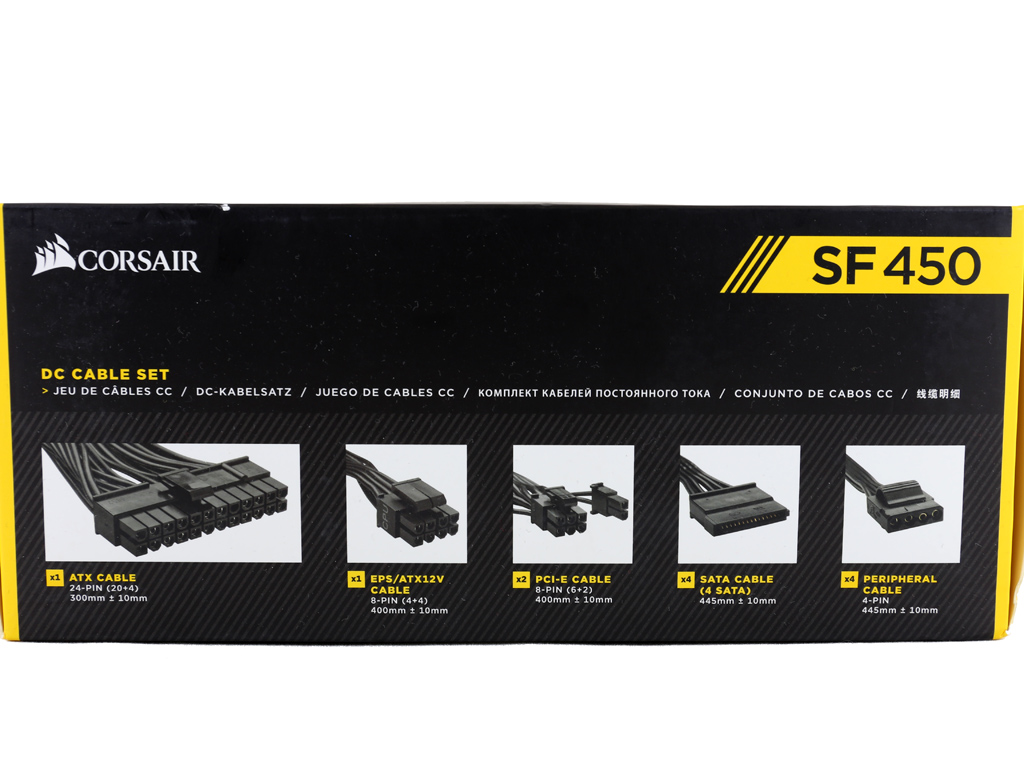
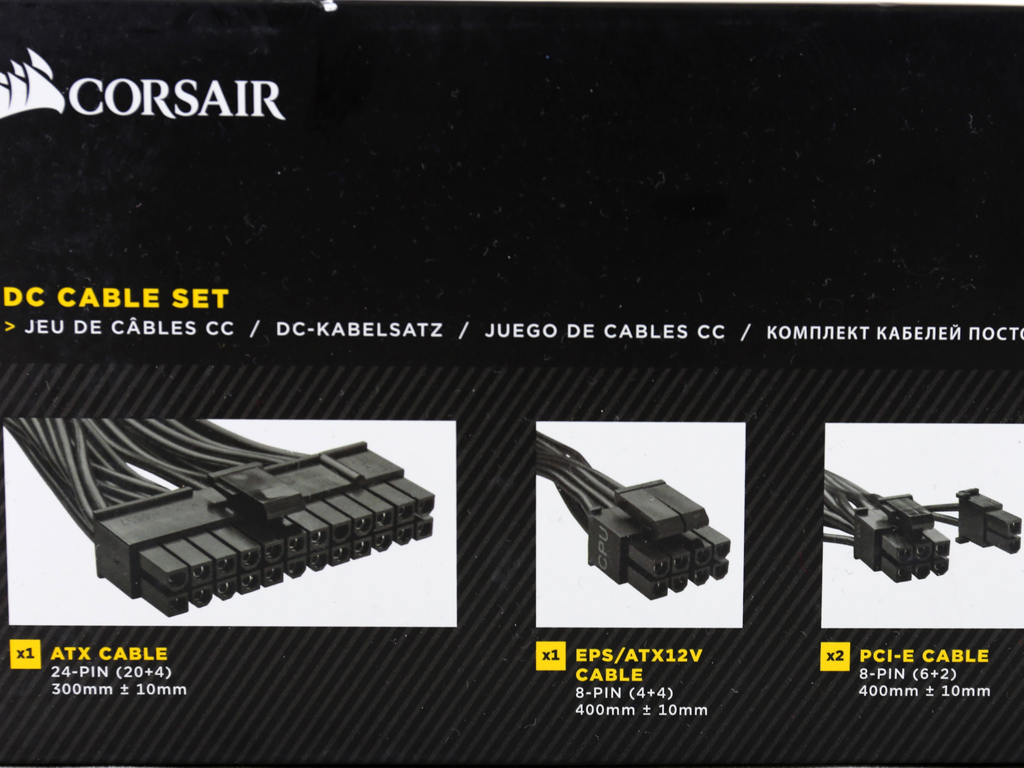
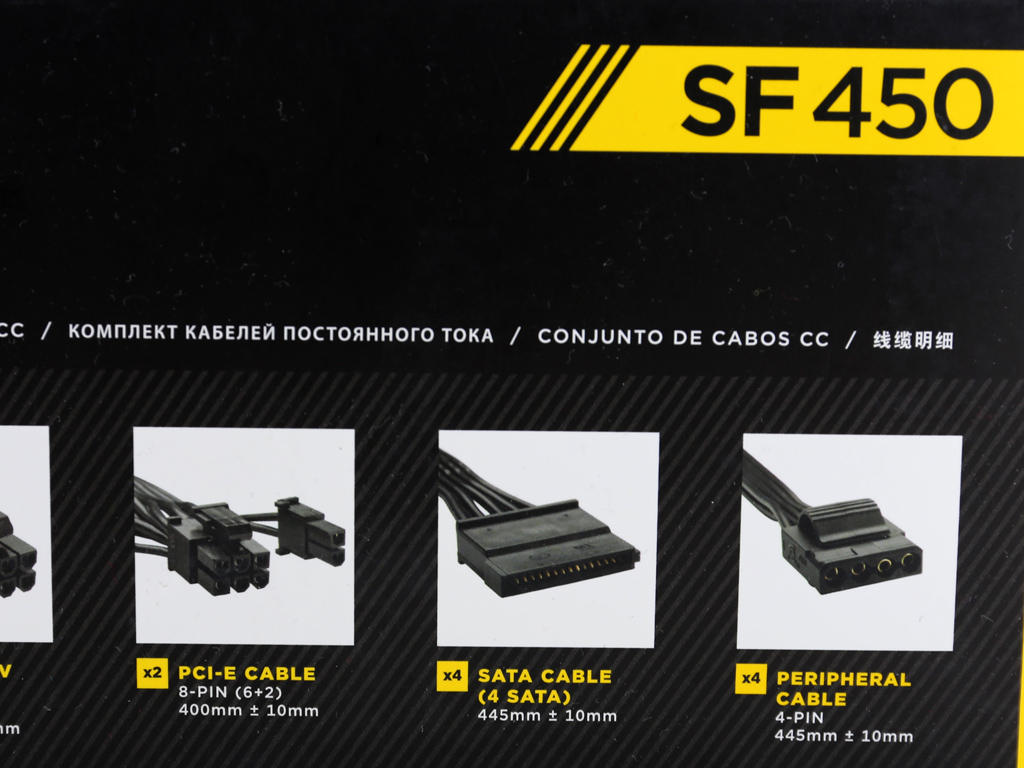
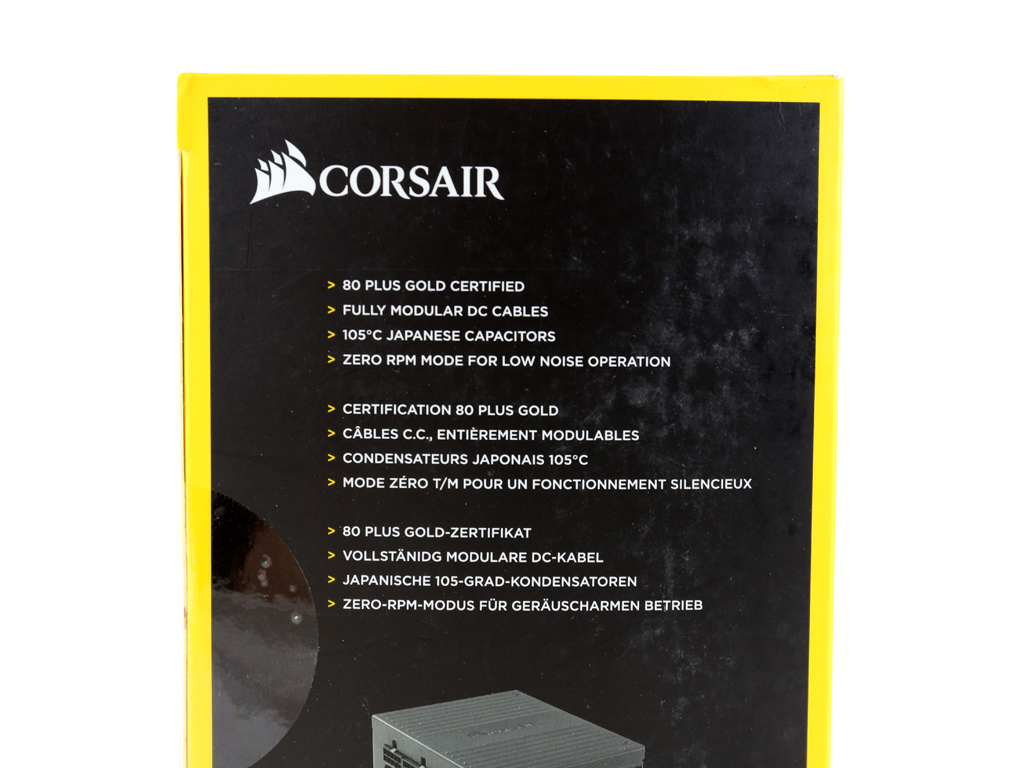
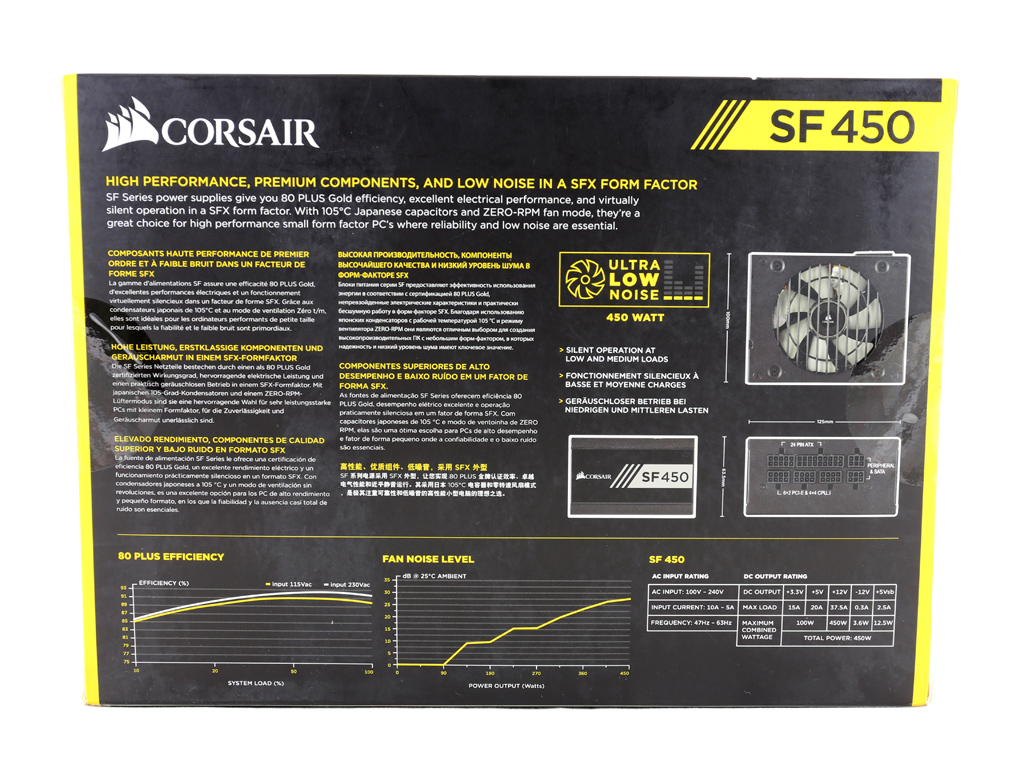
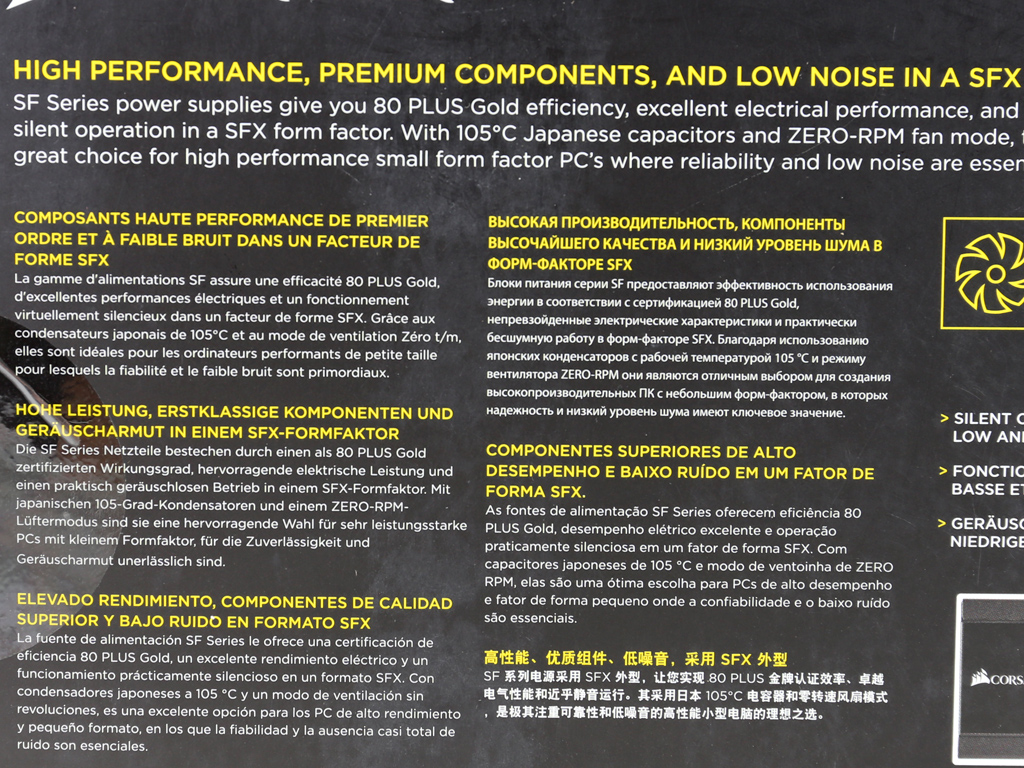
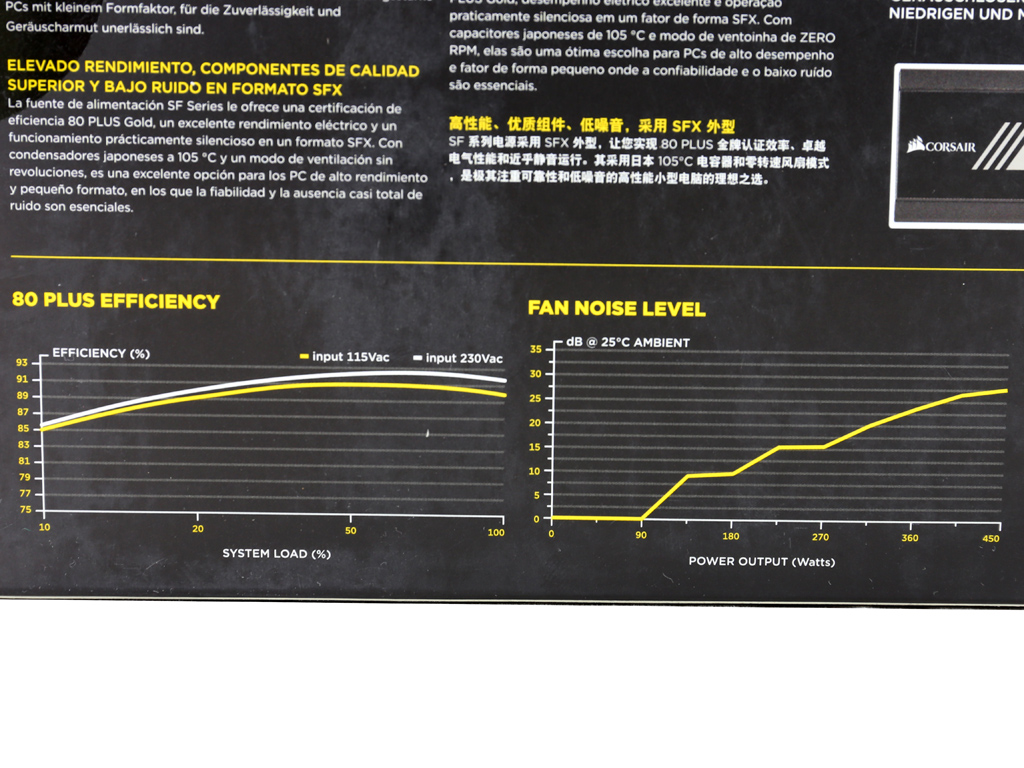
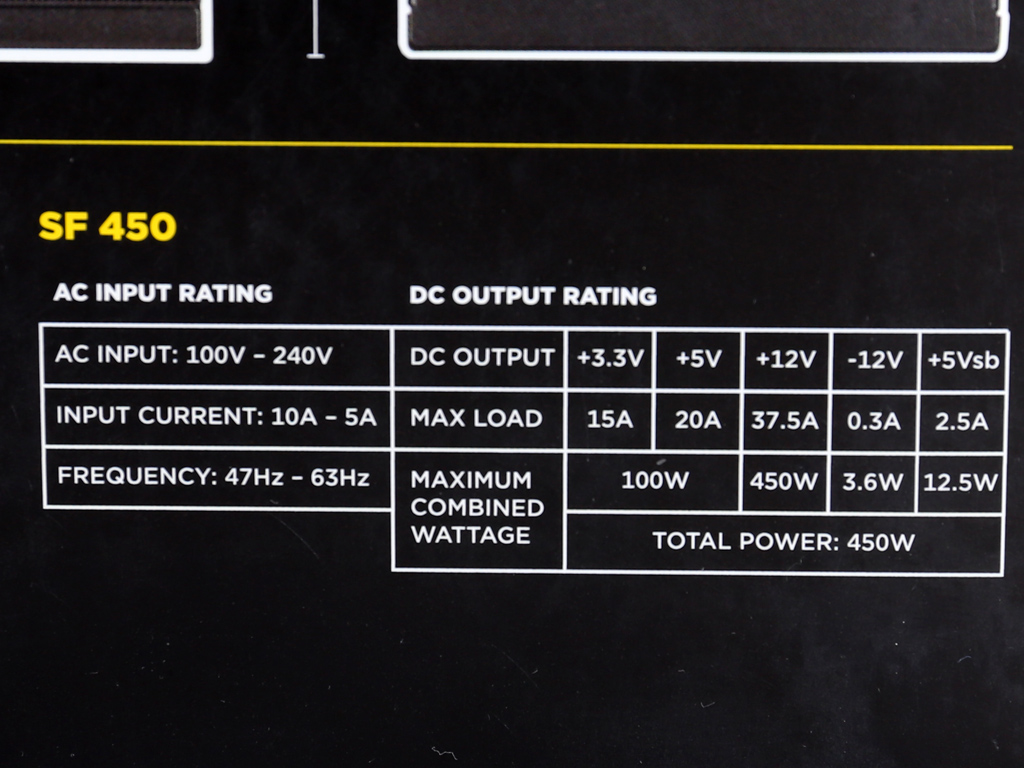
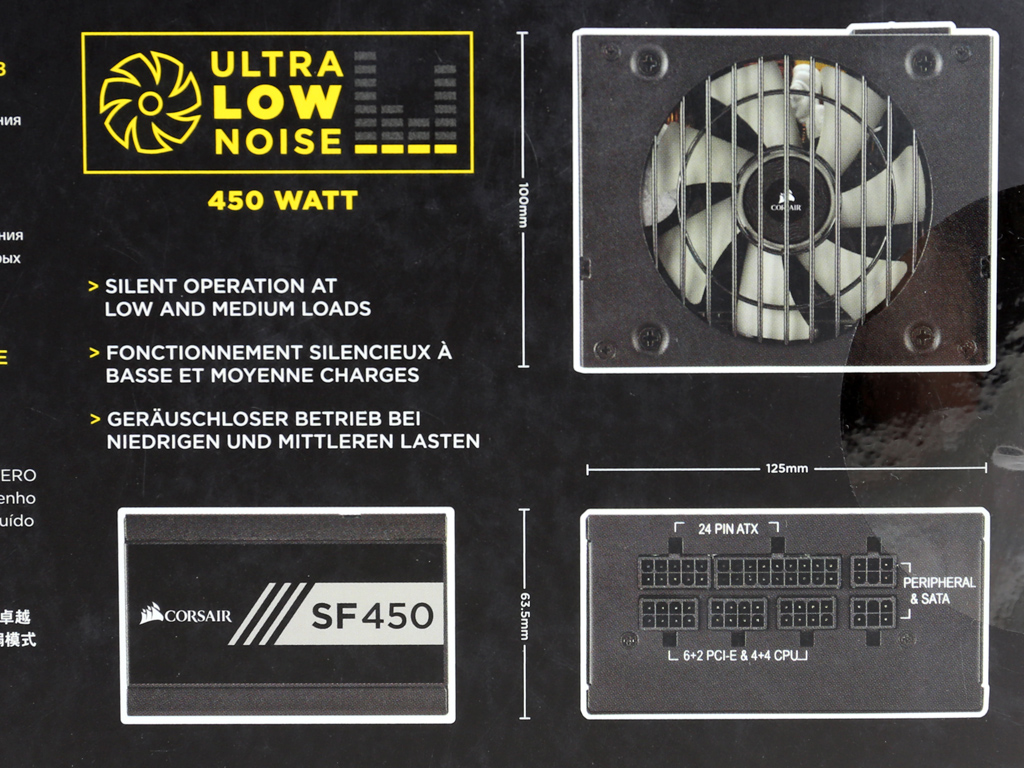
The box is small to match the PSU. Up front, you'll find a picture of the power supply with its modular panel exposed. The model number is highlighted in large letters, and right above it two badges depict the seven-year warranty and the 80 PLUS Gold rating. On the front-bottom, Corsair lists the most crucial features, including modular cabling, Japanese caps and semi-passive operation, in three languages.
On the top of the box you'll find a useful list of available connectors and cable lengths. The back of the box provides more detailed information, including a paragraph with an overview of the SF series, two graphs showing the efficiency and fan noise curves, a diagram of the PSU's dimensions and finally, the power specifications table. All in all, the box conveys a lot of information and this is definitely a good thing.
Contents
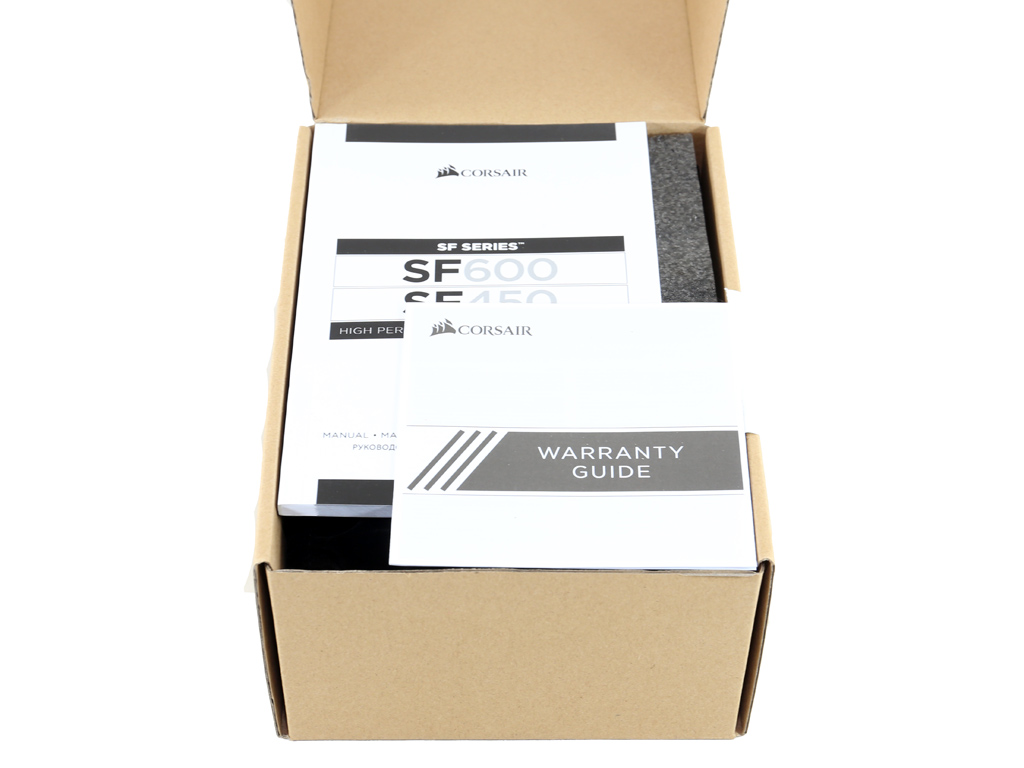
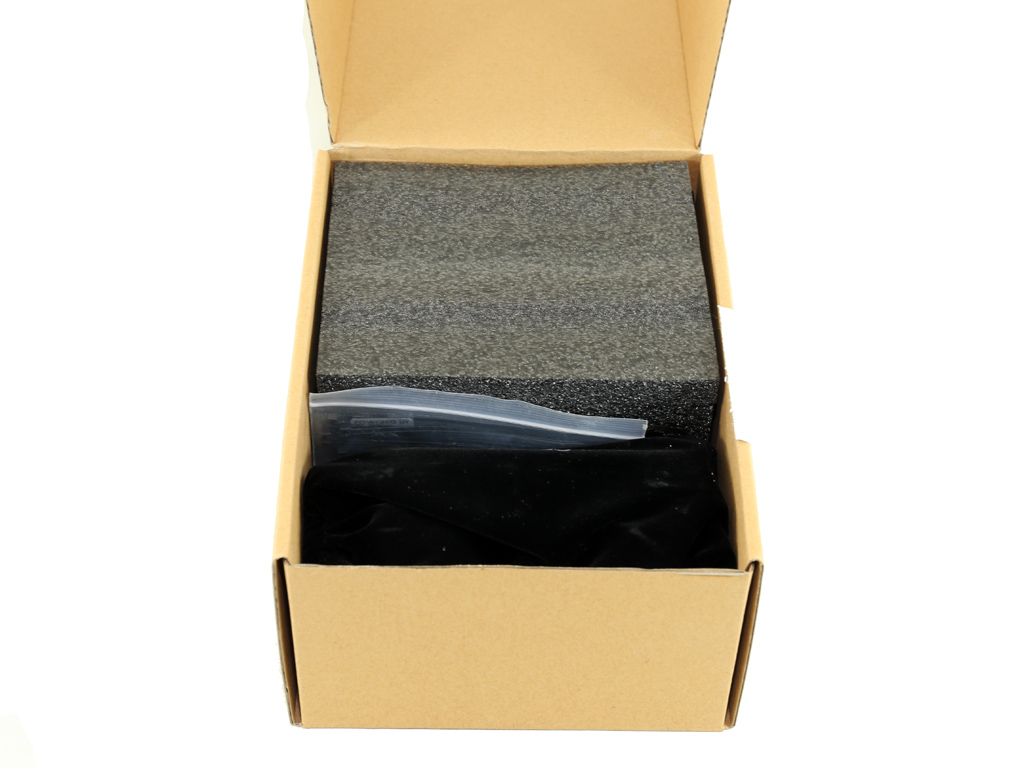
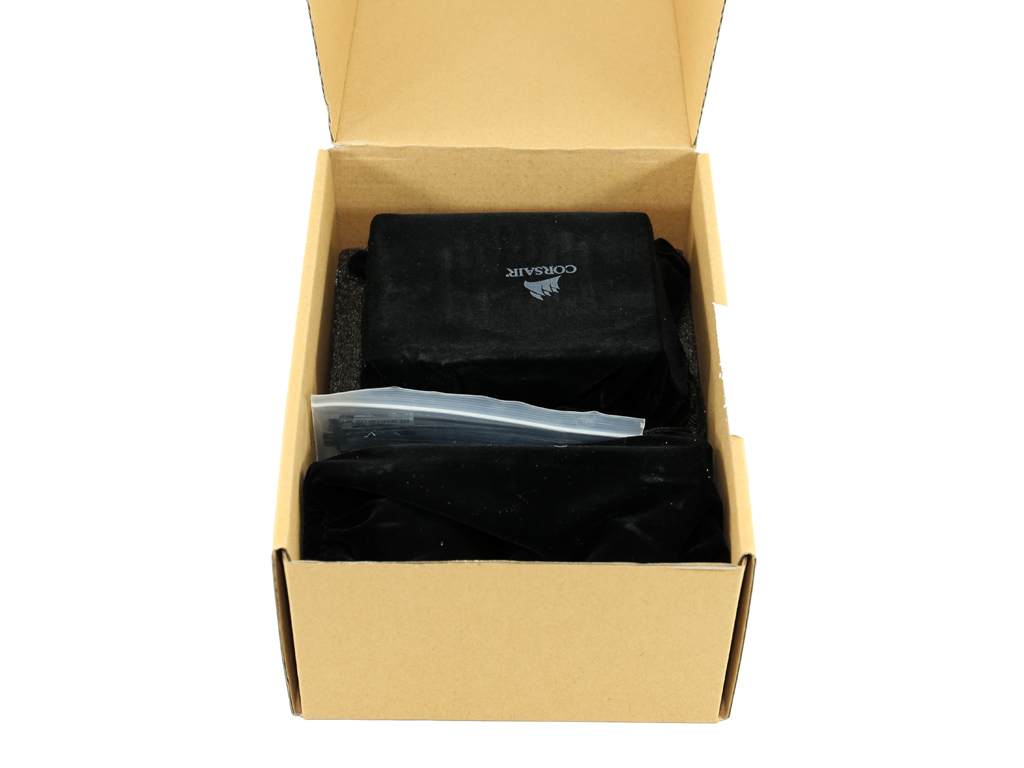
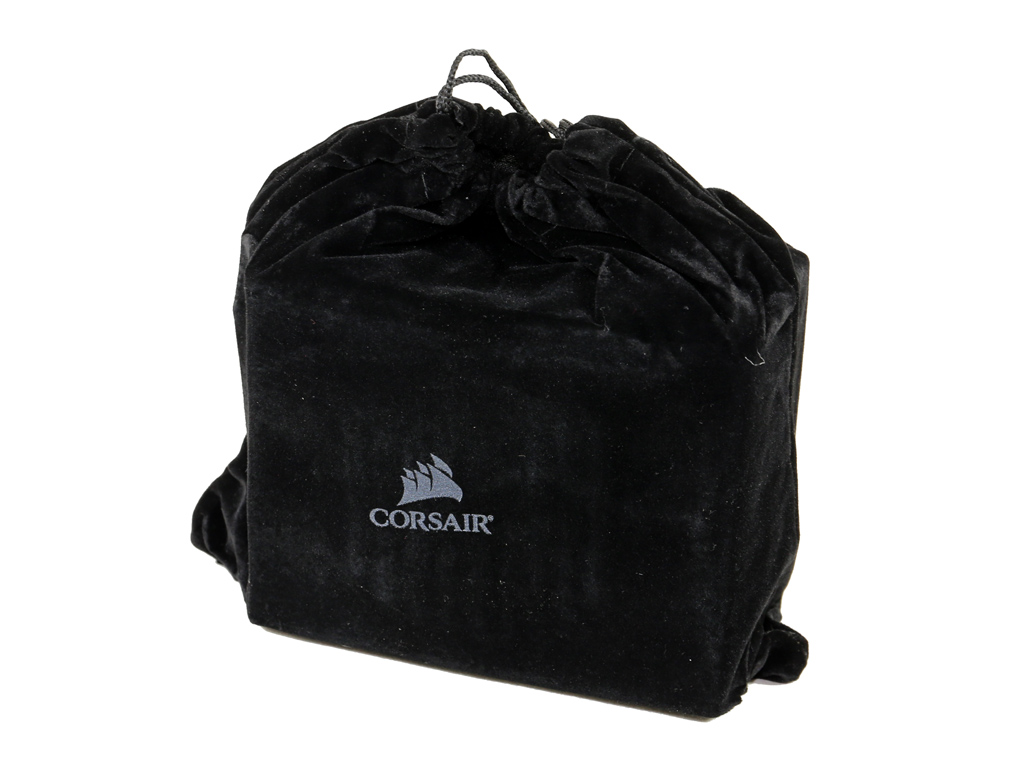
Once you remove the outer sleeve and open the box, you immediately notice the user's manual and warranty leaflet. Under them, you find the PSU surrounded by two thick pieces of packing foam. In addition, the PSU is stored in a nice cloth bag.
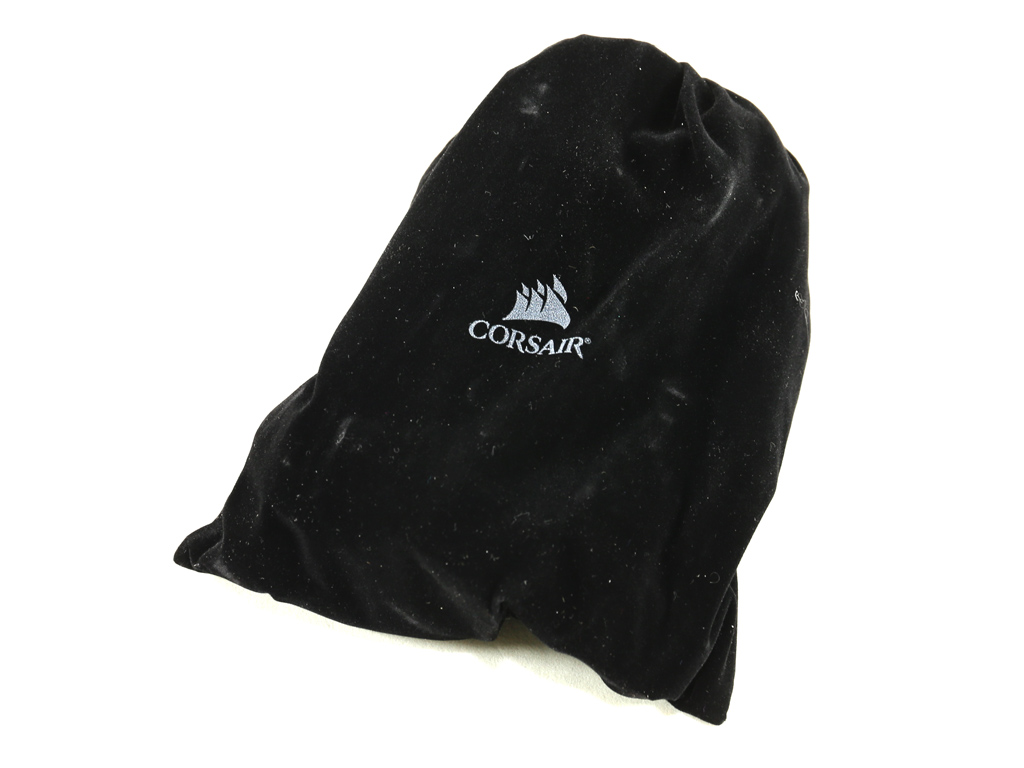
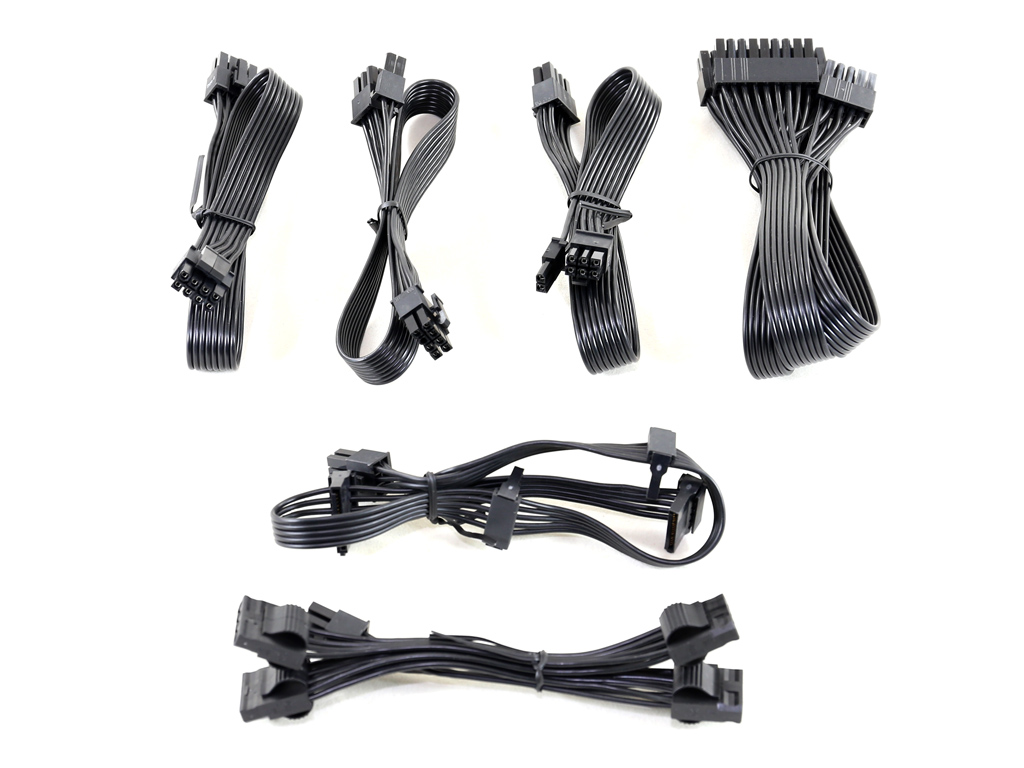
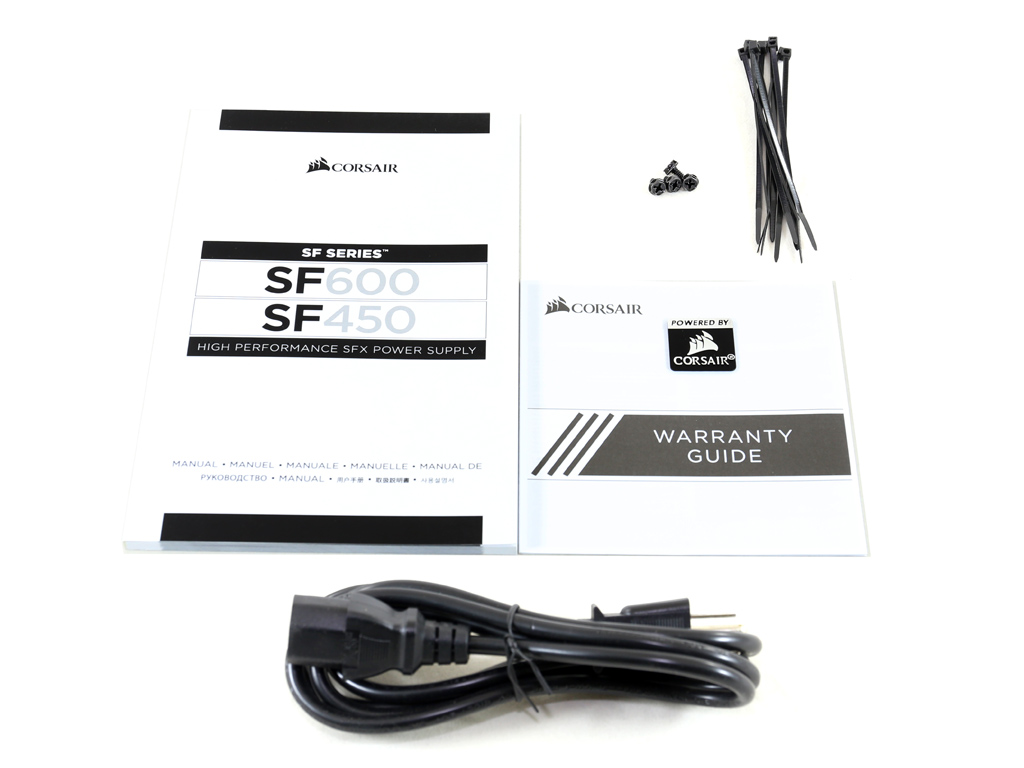
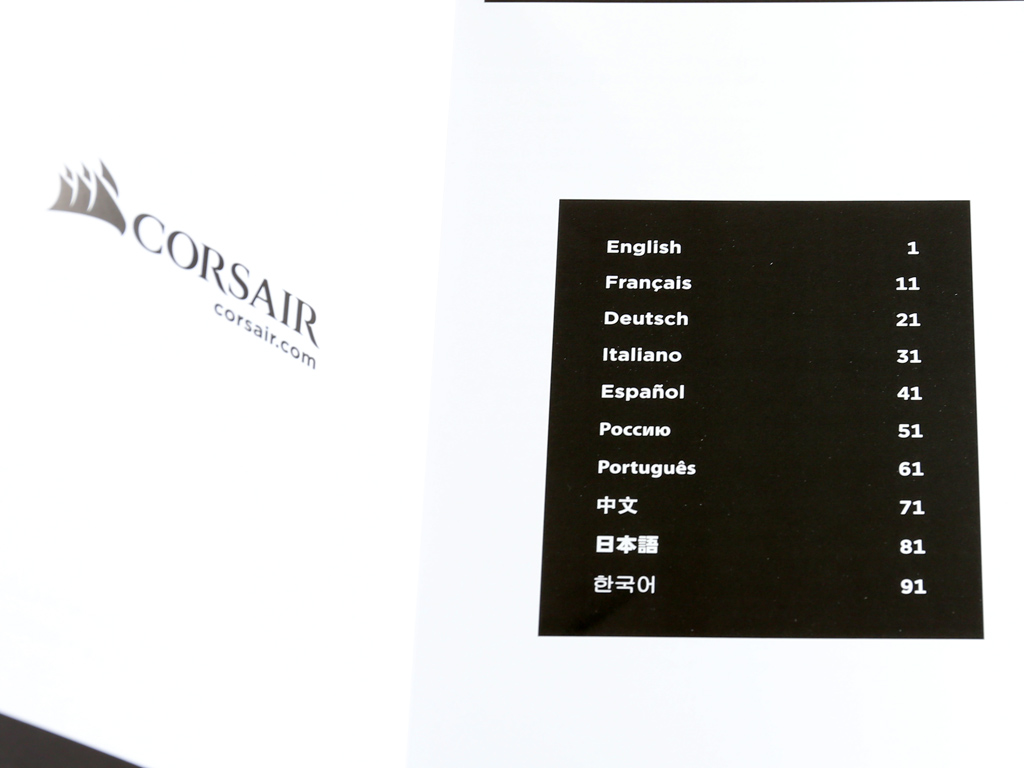
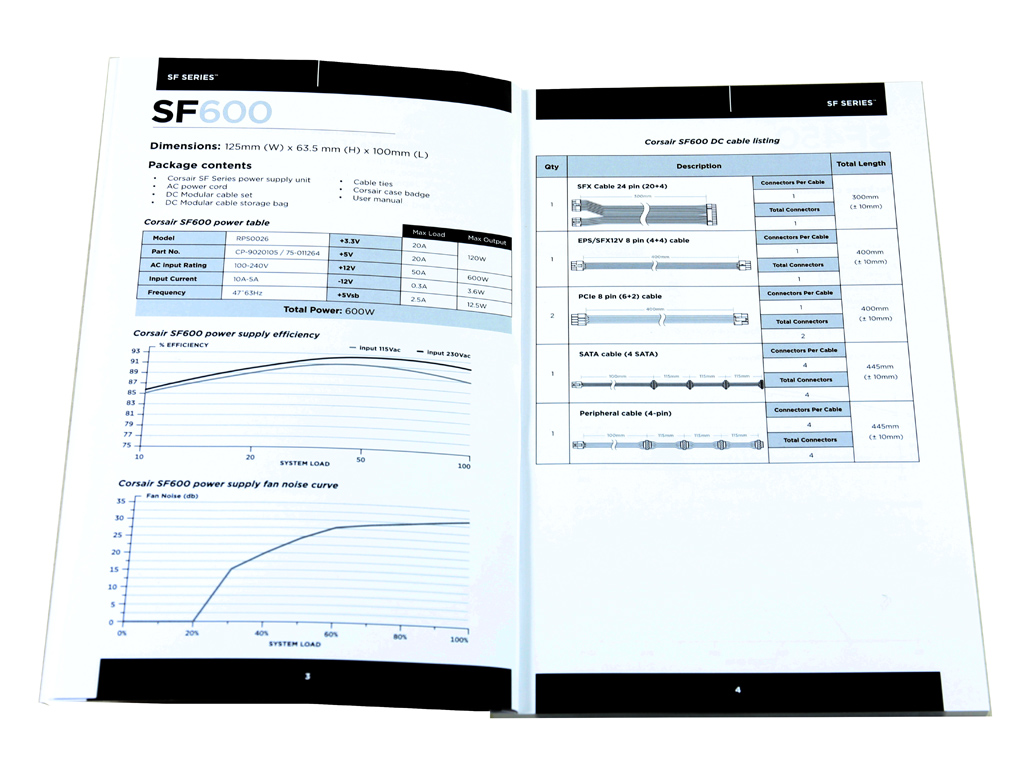
The bundle includes a case badge, several zip ties, a set of fixing bolts, the user's manual common to both SF models, a warranty leaflet, an AC power cord and the modular cables. Unfortunately, Corsair doesn't include an SFX-to-ATX bracket/adapter, which would facilitate installation in a normal ATX case. That's an egregious oversight given the SF450's high price. However, we'll add that particularly short cables would make installation in an ATX case tough, if not impossible.
Exterior
A label informs you that the PSU's fan won't spin under light loads. Every time it's switched on, the fan rotates a bit, showing that it works. Still, it'd be nice if Corsair added a fan test button, and it'd be even better if there was a switch for enabling/disabling the semi-passive mode. Some users don't want/need absolute silence, which increases stress on electrolytic caps due to increased heat.
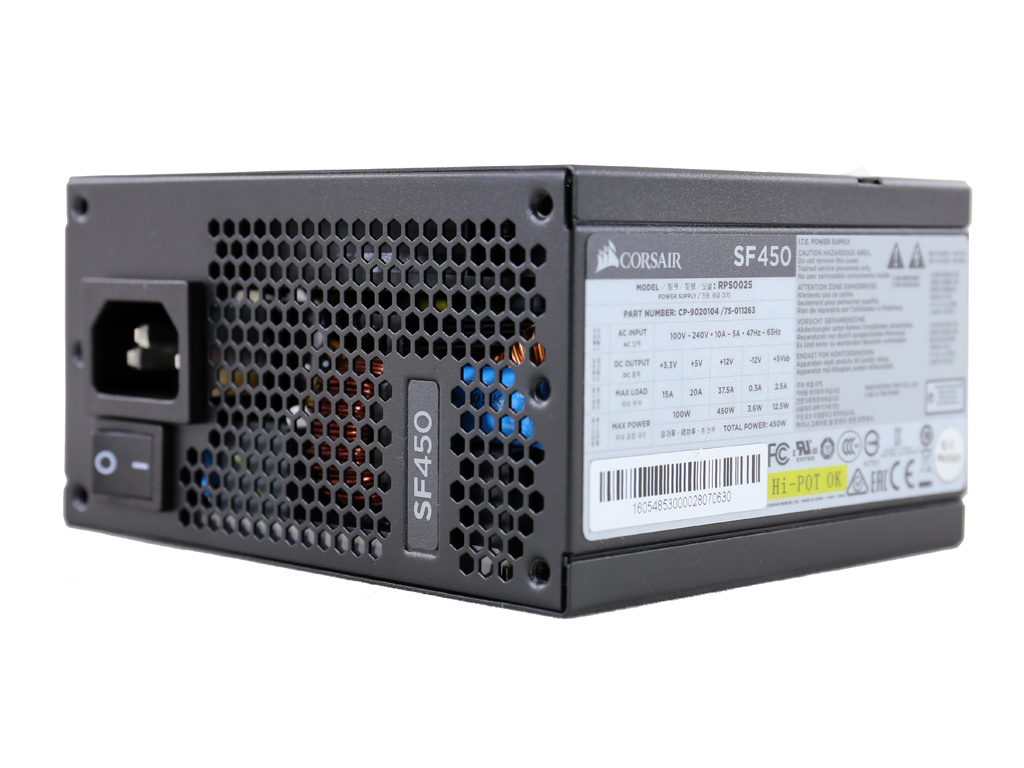
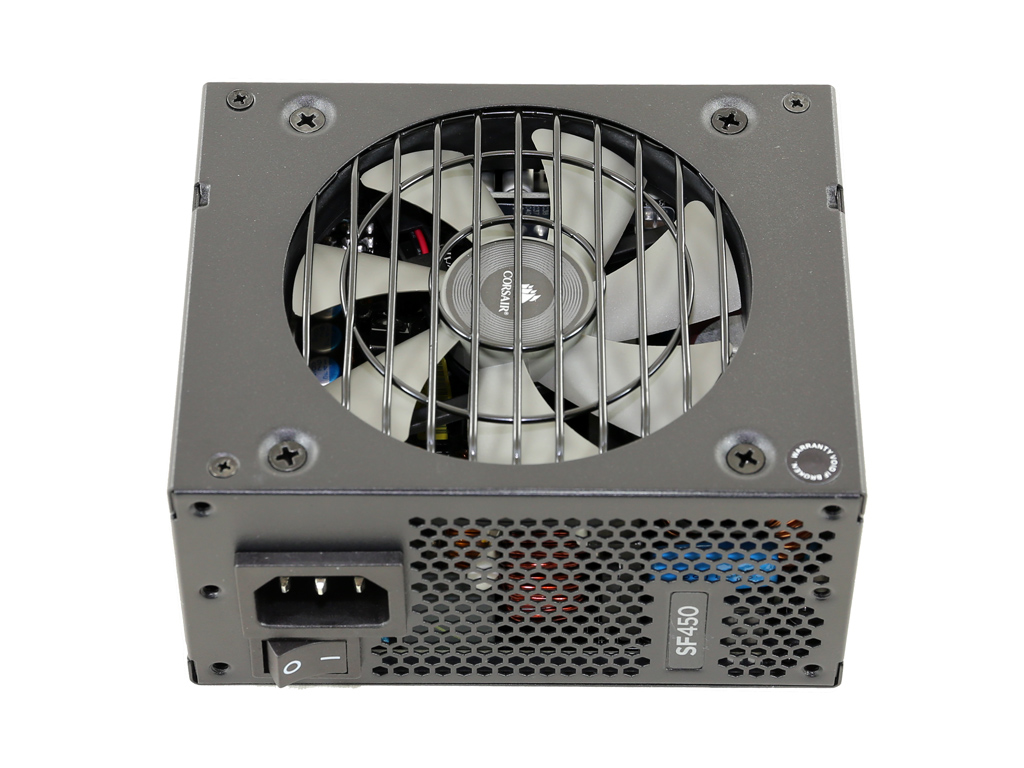
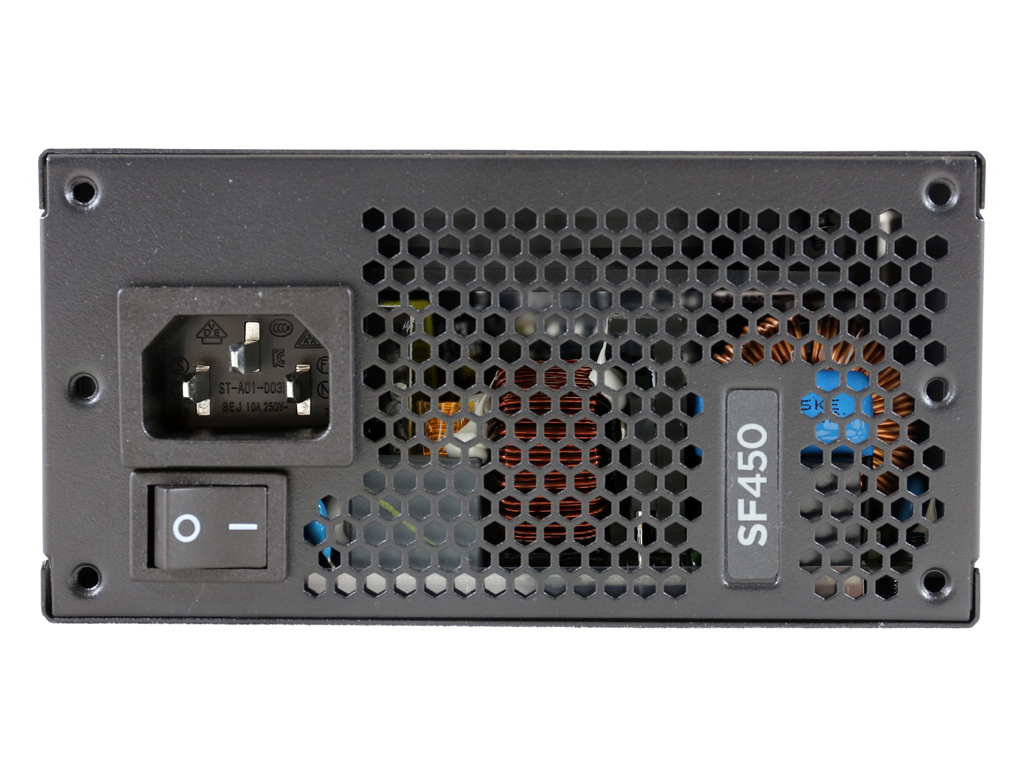
Although the design is plain, Corsair uses a high-quality finish. Around front, a small power switch is installed below the AC receptacle, and the fan faces upwards.
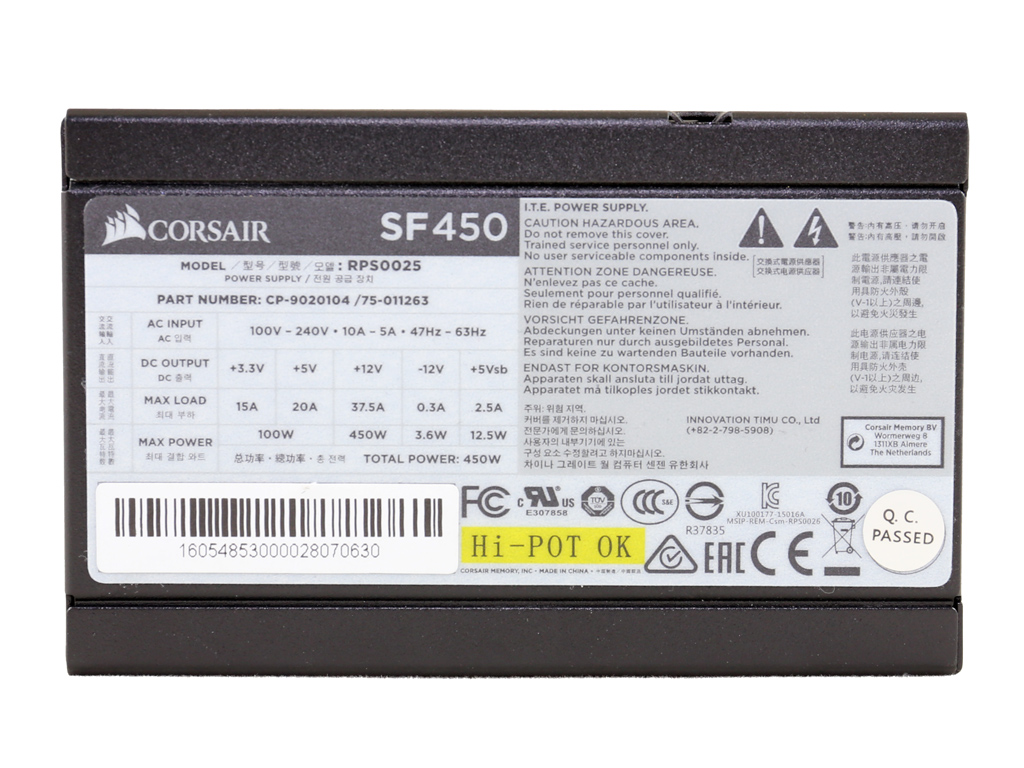
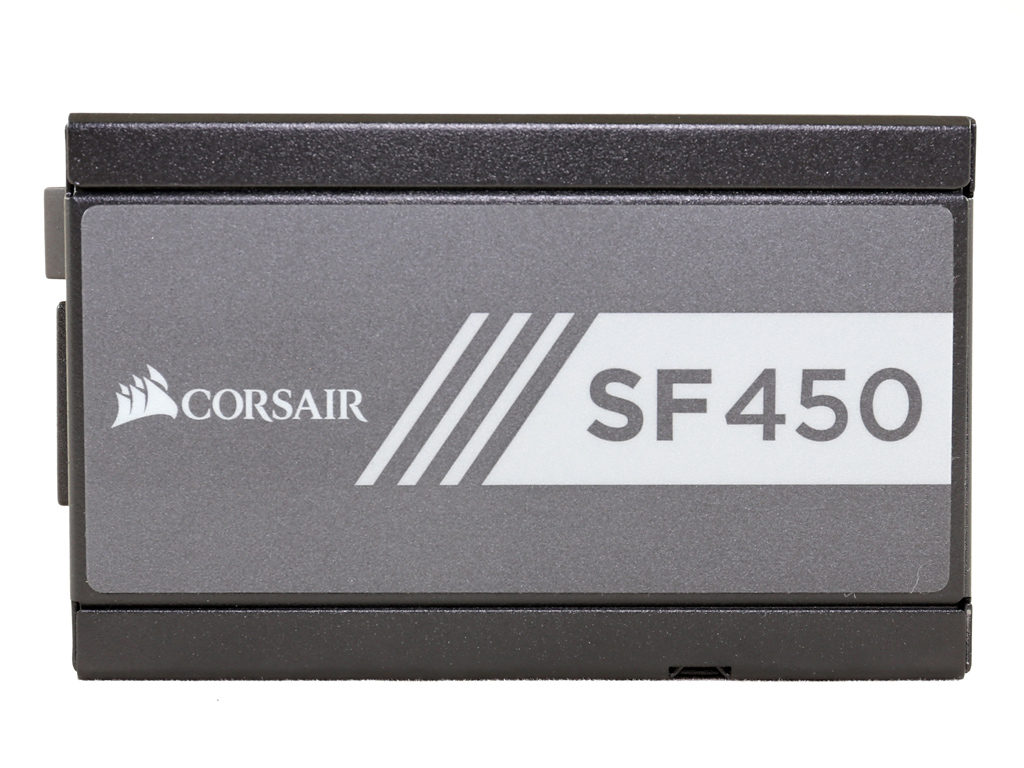
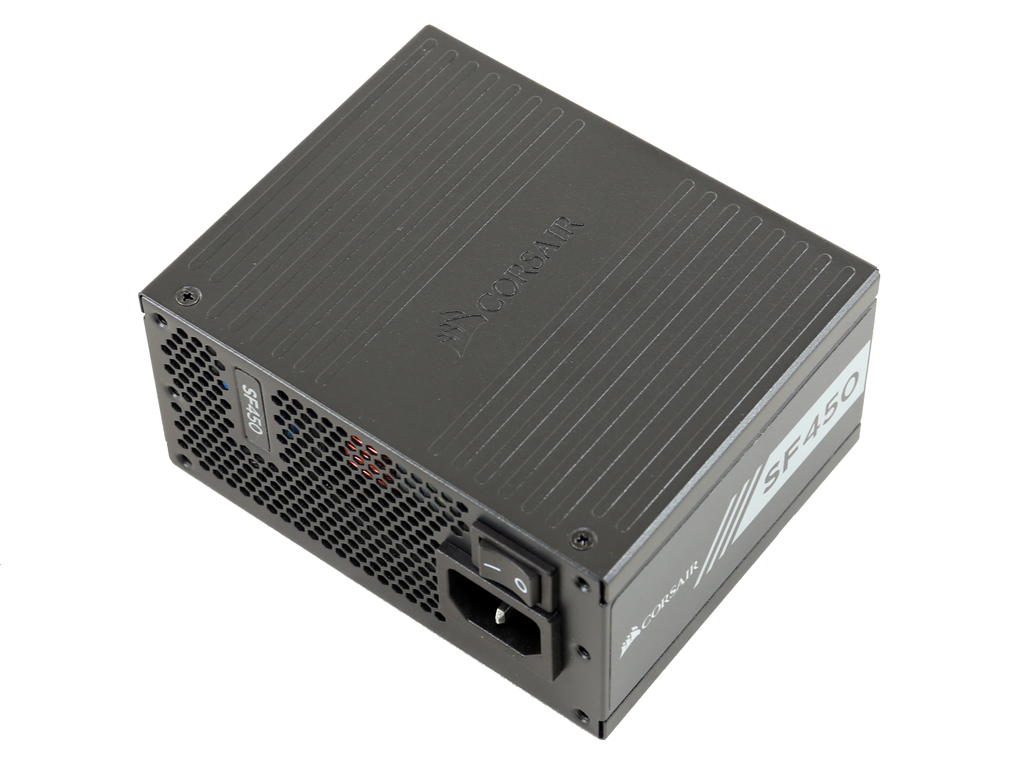
There's a power specifications label on one side and a large model number decal on the other. On the bottom, Corsair's logo is stamped onto the chassis.
Get Tom's Hardware's best news and in-depth reviews, straight to your inbox.
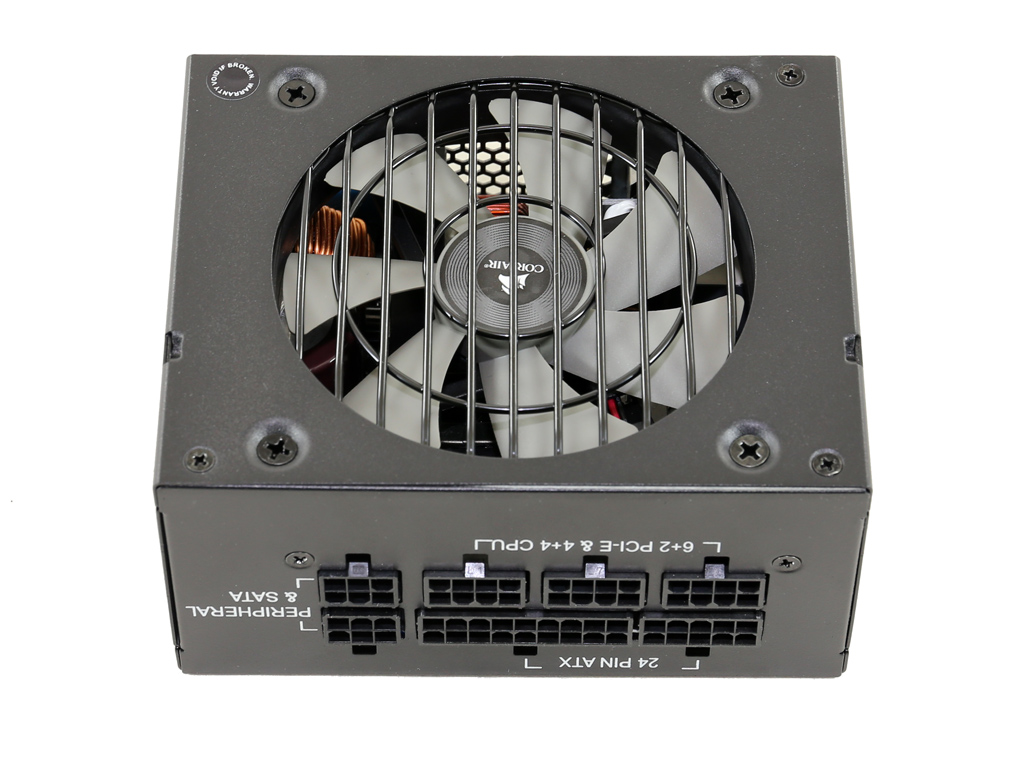

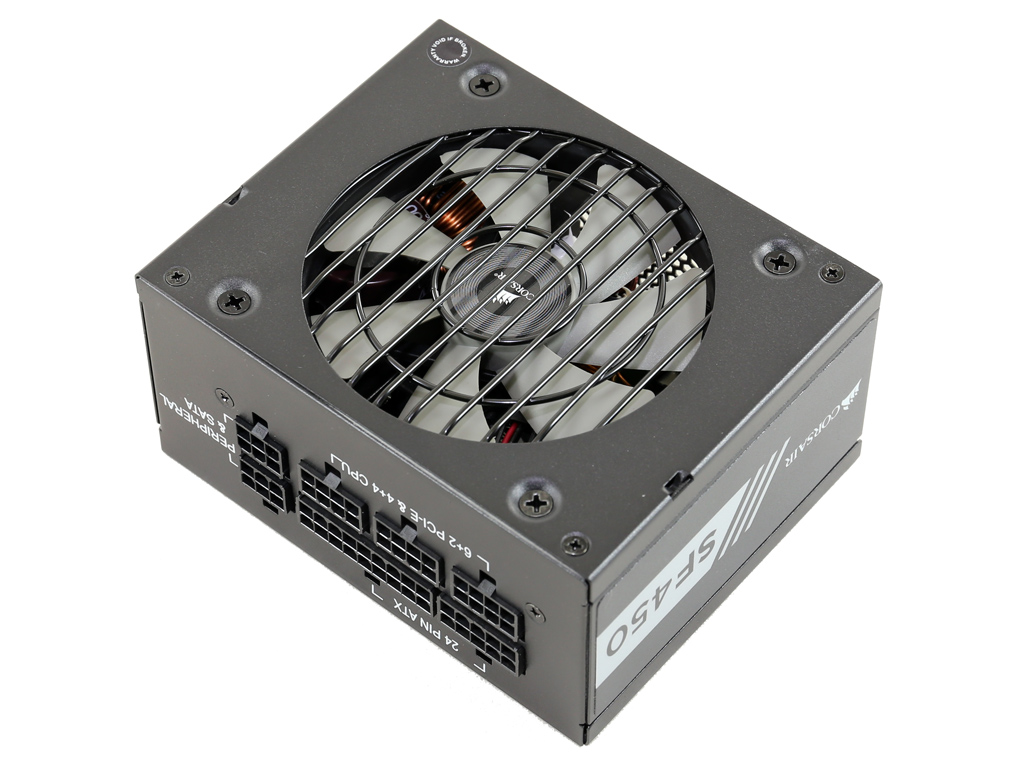
Around back, the modular panel exposes seven labeled sockets. Two of them are for the 24-pin ATX cable, three are for the PCIe and EPS connectors and two correspond to peripheral and SATA cables.

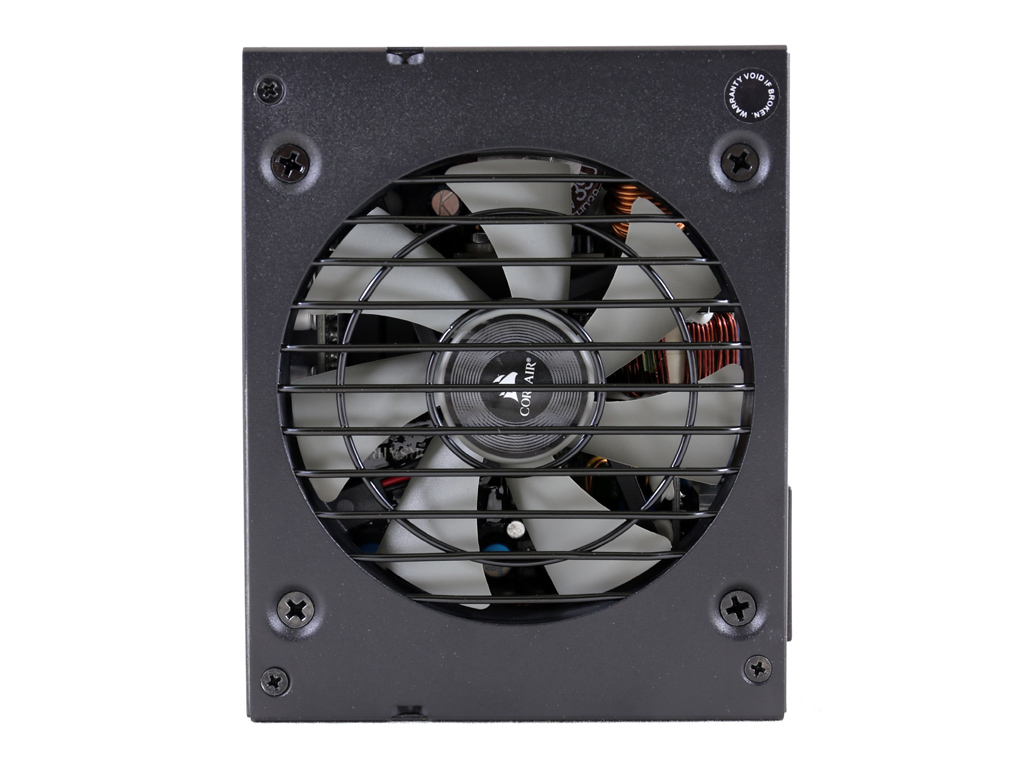
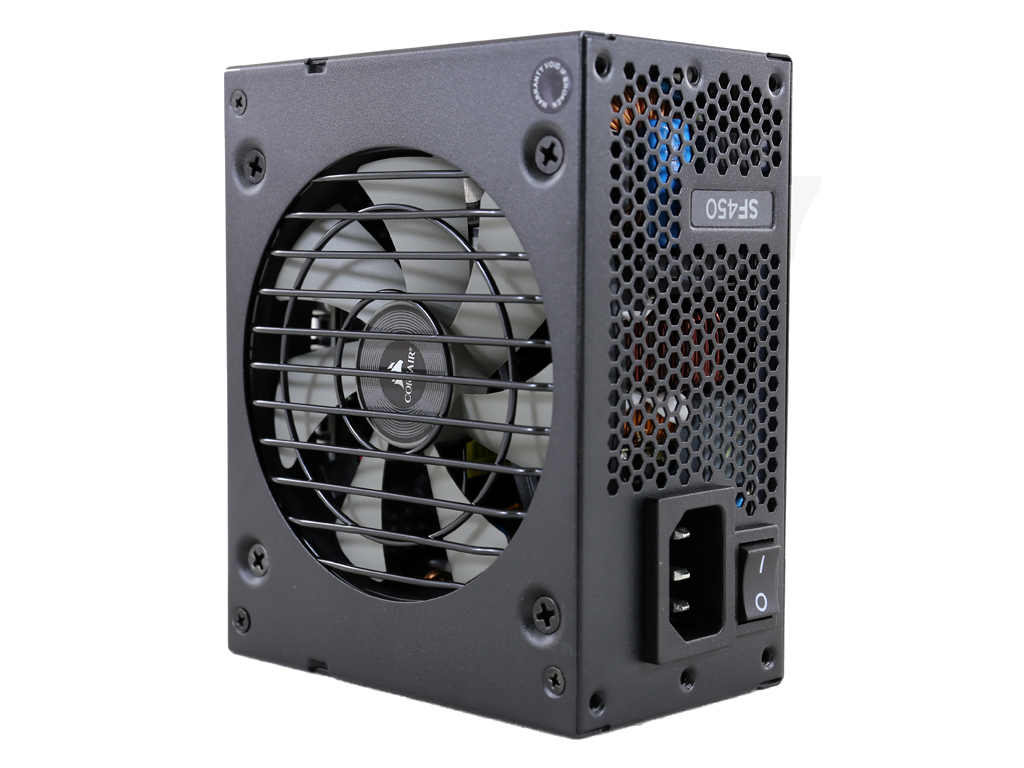
The unit's dimensions are notably compact, and the 92mm fan takes up a lot of space on the top. Clearly, a larger fan wouldn't fit in such a compact PSU.
Cabling
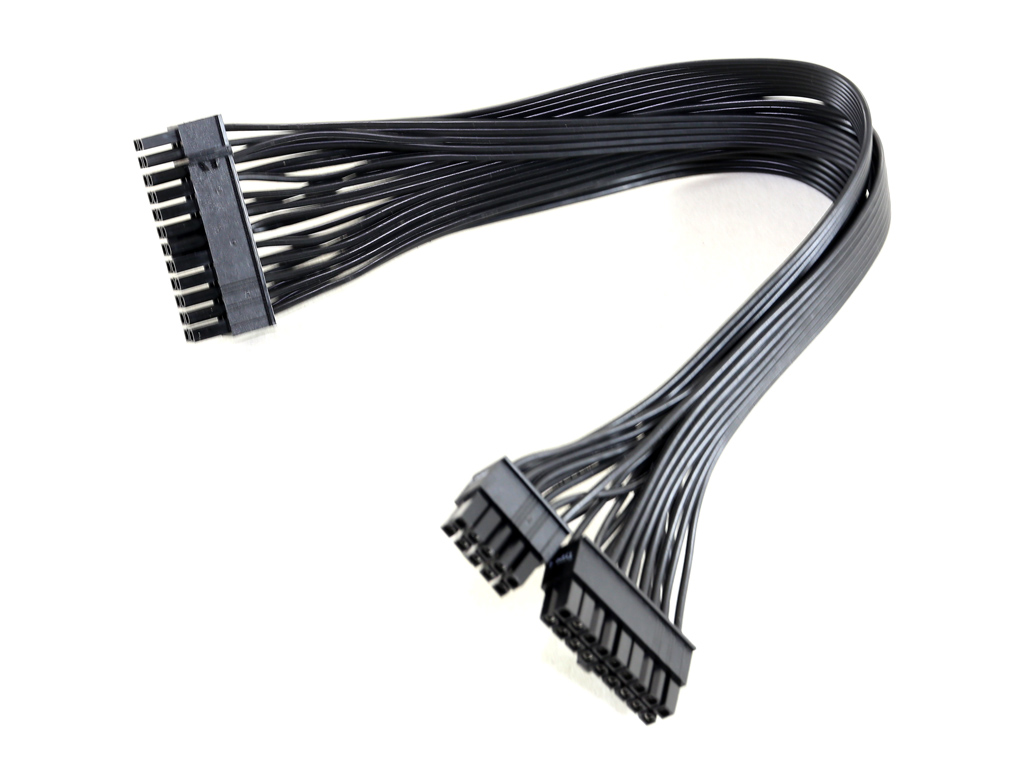
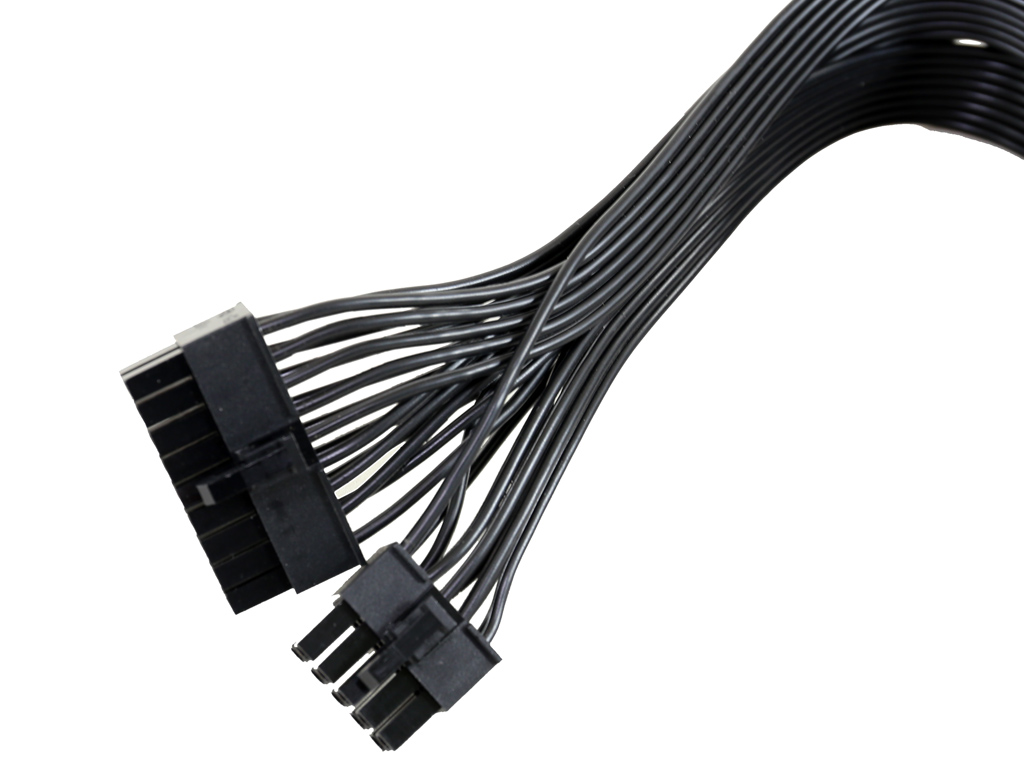
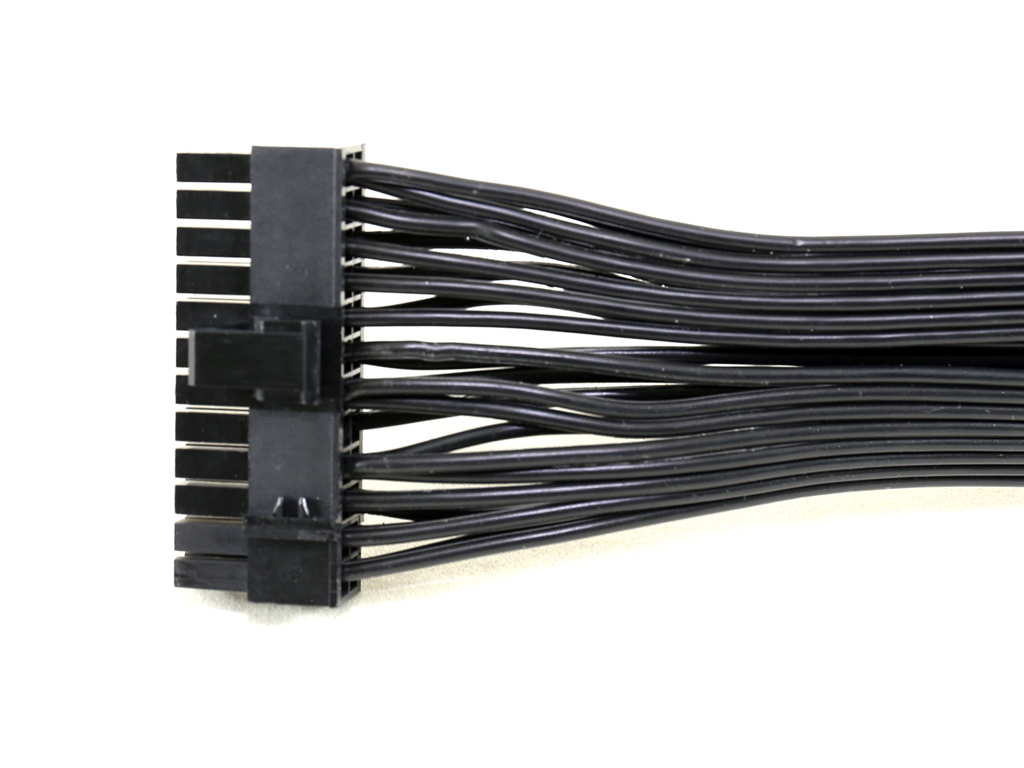
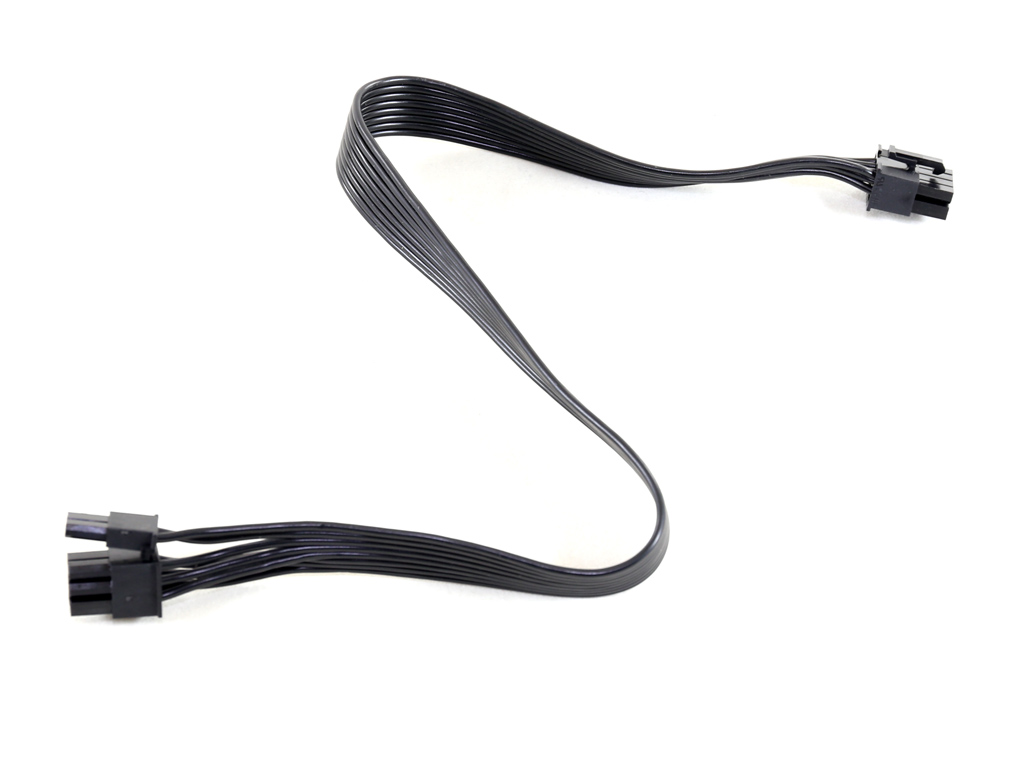
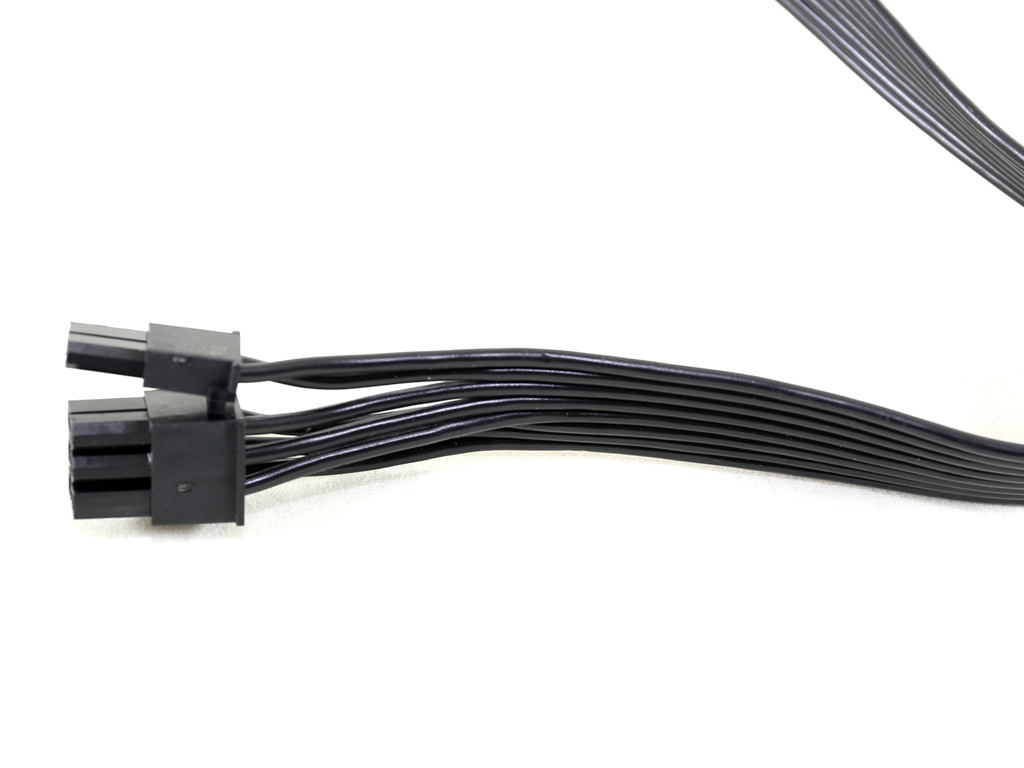
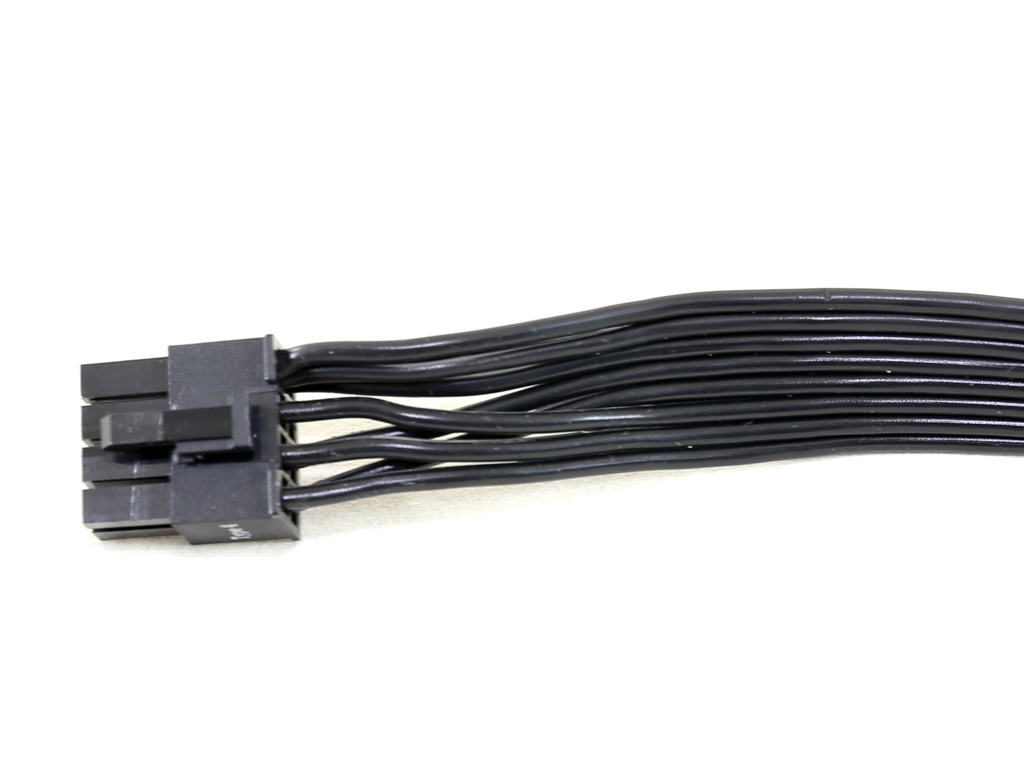
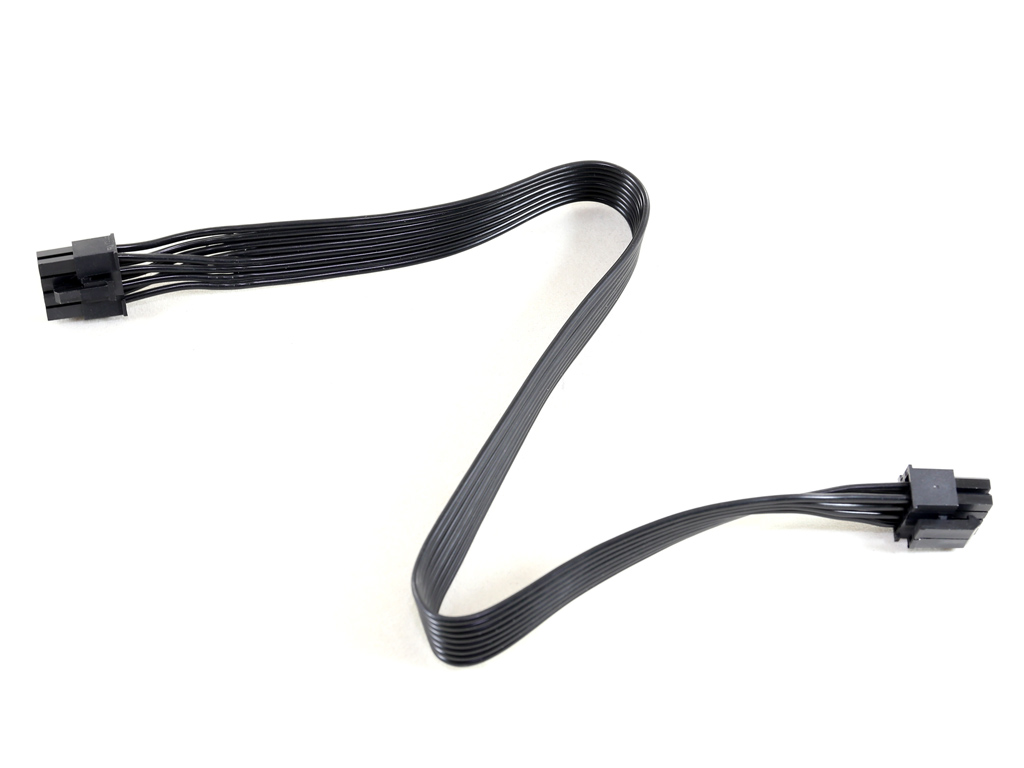
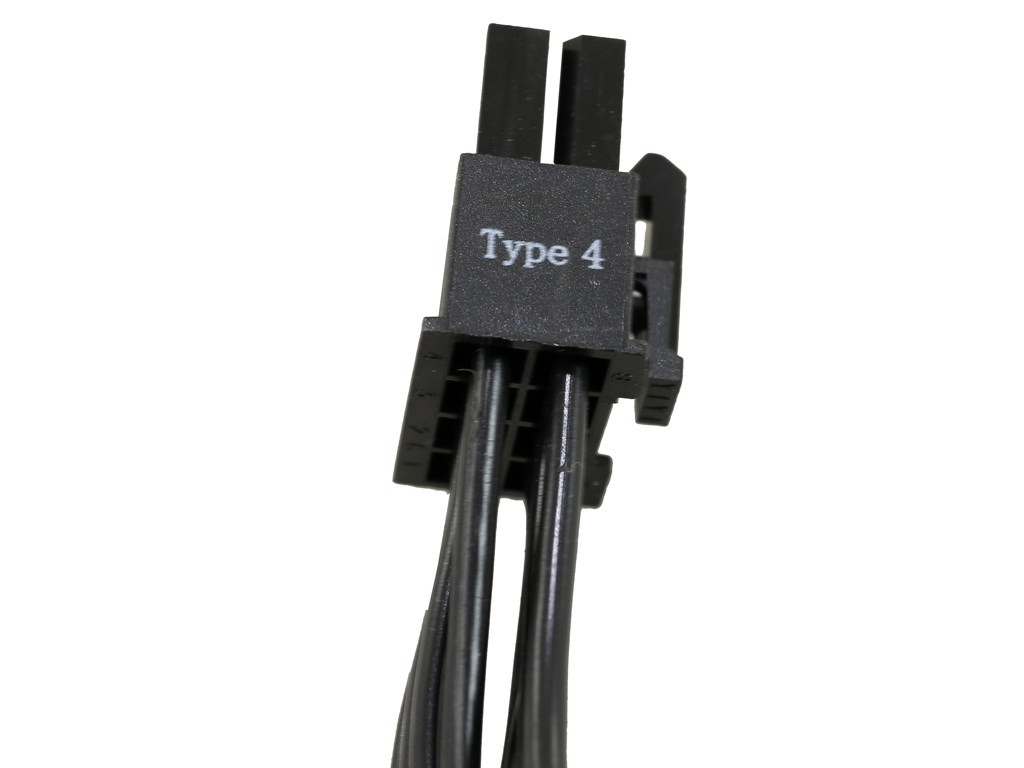
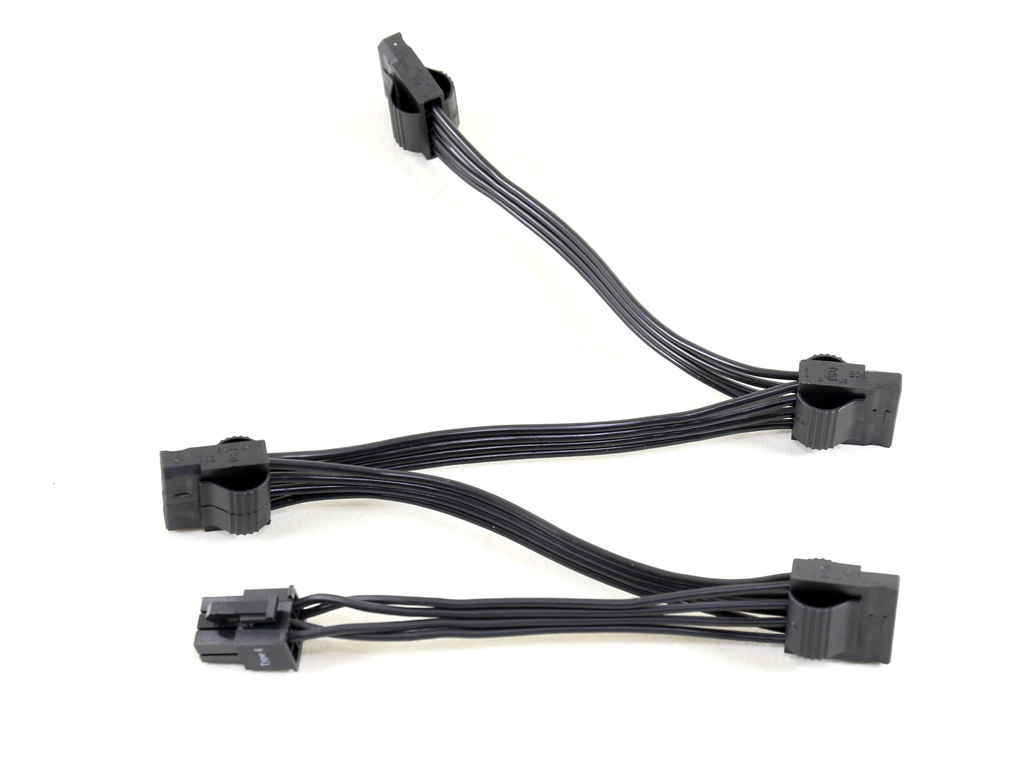
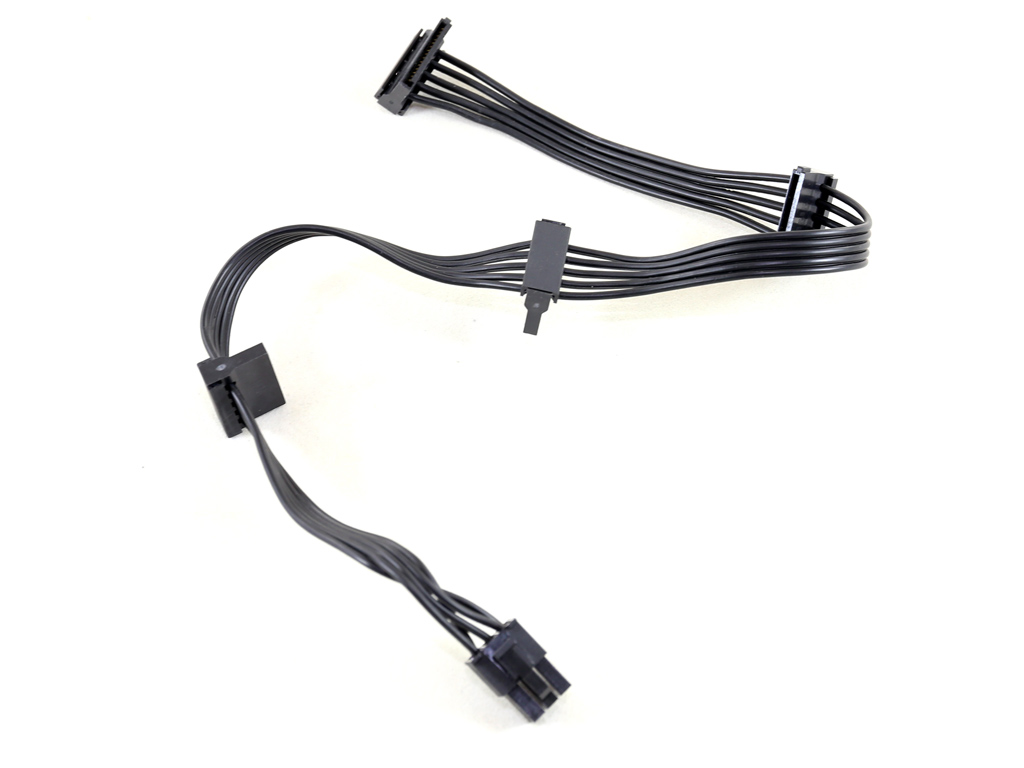
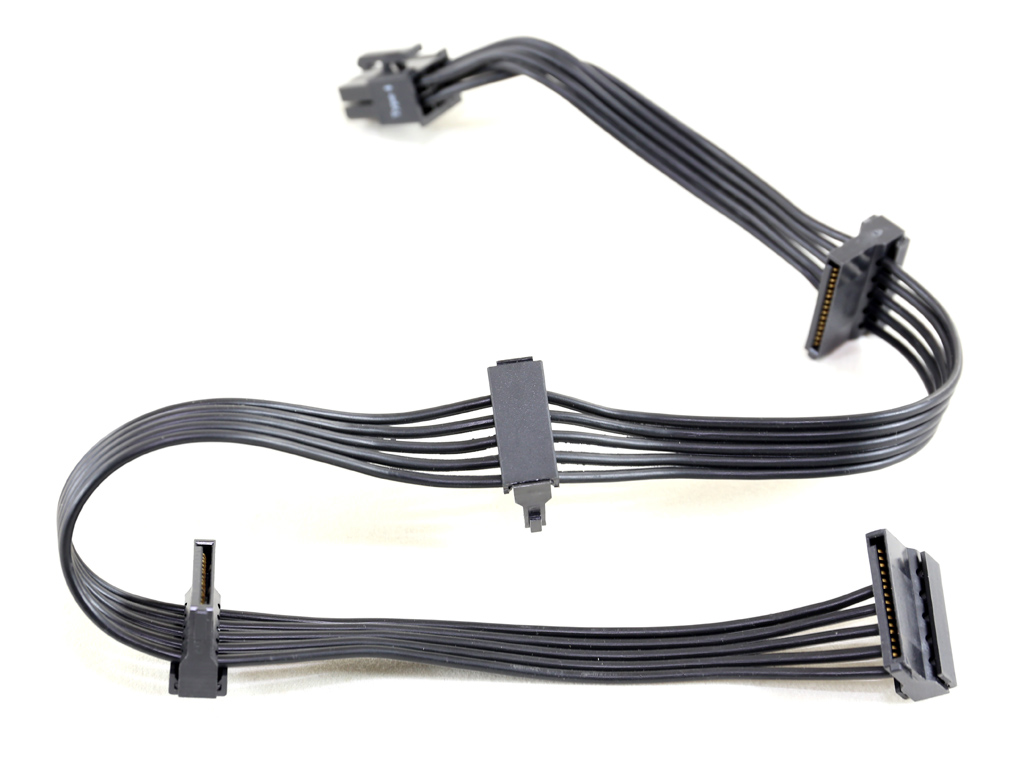
All cables are flat, stealth and flexible enough thanks to 18-gauge wires. Since this is a low-capacity PSU, there is no need for thicker wires. They'd only serve to make the cables rigid and render the routing process more painful than it needs to be.
Current page: Packaging, Contents, Exterior And Cabling
Prev Page Introduction Next Page A Look Inside And Component Analysis
Aris Mpitziopoulos is a contributing editor at Tom's Hardware, covering PSUs.
